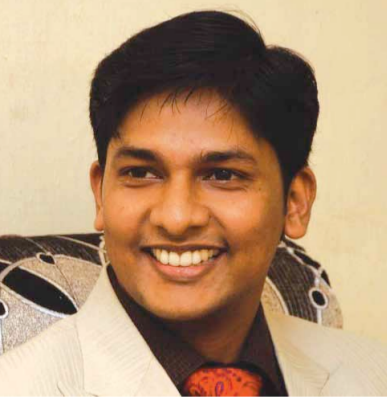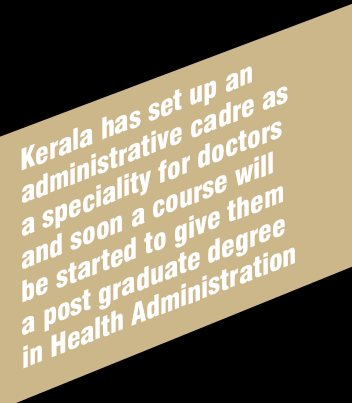 P Bala Kiran, Dy. Secretary, (Dept. of Information Technology), Director, Akshaya & Nodal Officer (Endosulfan Victims Rehabilitation), Kerala, reveals the healthcare initiatives his state has taken to ensure technology enabled healthcare reaches to most. Interviewed by Aruna Tiwari, ENN
P Bala Kiran, Dy. Secretary, (Dept. of Information Technology), Director, Akshaya & Nodal Officer (Endosulfan Victims Rehabilitation), Kerala, reveals the healthcare initiatives his state has taken to ensure technology enabled healthcare reaches to most. Interviewed by Aruna Tiwari, ENN
What is your take on the Indian healthcare sector? What are the major developments that the country has made and what are the challenging areas the sector is facing?
In the recent times, the Indian healthcare sector is increasingly getting primary importance with union health budget allocation of `21,000 crore, which was much better than `8000 crore in 2004-05. In terms of life expectancy, child survival and maternal mortality, Indias performance has improved steadily. As per SRS-2010, life expectancy is now 63.5 years, infant mortality rate is now 47 per 1000 live births, maternal mortality ratio is down to 212 per lakh live births and total fertility rate has declined to 2.6. However, there are wide divergences in the achievements across states. For example, in Kerala, the progressive social movements had a vital role in enhancing the social accessibility by means of effective political participation, increased literary and awareness programmes. The kind of social development which occurred in the State (high physical quality of life at lower rates of economic growth) has been described as the Kerala model. In health-care delivery as well, the state has offered something new to the world by way of good health at low cost, partly as an offspring of the broader development path of the state. In recent times other states, example Tamil Nadu and Himachal Pradesh, have been able to make substantial progress in provision and acceptance of services. Many other states are in the process of adopting practices that have proved successful and the results should be obvious before long. The most important factor of production in health is manpower. At present their availability is skewed with some states not able to generate enough skilled manpower. Lack of systems for monitoring, ensuring supplies on time and capacity building are also major constraints. These will become even more obvious as India scales up the availability of resources to health sector.

Tell us about the successful healthcare projects which have been launched in the state of Kerala.
Achievements of Kerala in healthcare are considered exemplary in terms of common healthcare indices employed to measure the ranking of states. In fact it is not only far above the national average but even comparable to the developed countries in the world. The Department of Health and Family Welfare is the primary Government entity responsible for healthcare management in the state. The department has been implementing various central and state programmes intended for improvement of healthcare of its citizens very efficiently and this is reflected in various social and health indicators which are comparable to the western standards. Now the department has also taken care to take IT implementation to the grassroot level by providing one PC each down to the Primary Healthcare (PHC) level. The field staff is already trained to handle computers. The department is now all set to take the IT implementation to the next level. Also, Kerala implements all of the national healthcare programmes and most of the successful outcomes have been the result of efficient implementation of these programmes. e.g: Family Planning, Malaria control, TB control and Prevention and control of HIV/AIDS. Some of the unique programmes we have started are:

Population based control of non communicable diseases
Pain and Palliative care for the terminally ill
Programme for supporting the victims of gender violence

 What are the challenges to the health sector in the state and what strategies have you implemented to overcome them?
What are the challenges to the health sector in the state and what strategies have you implemented to overcome them?
The state is now believed to be in the stage III of the epidemiologic transition signified by the high incidence of lifestyle diseases. The observations of the Cardiology Society of India, Kerala Chapter reproduced below summarises it all “Kerala has the highest life expectancy, the lowest infant mortality rate (IMR) and maternal mortality rate (MMR). This social transition also has unfortunately led to the highest prence of Coronary Artery Diseases among all Indian states with a rural prence of 7.5 percent and urban prence of 12 percent. Cardiovascular death is 50 percent of the total death and by 2020 it is predicted to go up to 2/3 of the total death.
Kerala has already emerged as the diabetes capital of India. Kerala is facing new health challenges like return of infectious diseases, increase in accidents and injuries, increasing geriatric population and their problems, high level of suicides, diseases due to environmental degradation, diseases like dengue, JE, chikungunya and HIV/AIDS. Coming to the strategies, the awareness levels of the people is the most valuable asset of Kerala. Using this, Kerala organises an annual programme for control of communicable diseases. Kerala has a programme for screening of the entire population for diabetes and hypertension. Soon cancers of the oral cavity, breast and cervix will be added. In order to strengthen decentralised leadership, Kerala has set up an administrative cadre as a speciality for doctors and soon a course will be started to give them a post graduate degree in Health Administration.

Tell us about your vision for the states health department.
The Health Department vision for 2020 is to create a society that can afford healthcare cost; that is healthy, active and vibrant to fight against lifestyle and modern diseases; a state actively involving, interfering and regulating the unethical practices and providing a pollution free environment, taking care of the old and weak, thereby establishing a proper healthcare system for the people of the state

Tell us about the eHealth initiatives that are being taken?
Presently, the Department envisages an effective IT enabled integrated framework to ensure efficient service delivery to the common citizen and provide a centralised database of healthcare information allowing close monitoring and control measures.
This will be a robust and sustainable IT solution supporting nearly 30,000 healthcare service personnel consisting of doctors, paramedical and other non-clinical staff at the primary,secondary and tertiary care centres maintained by the state Government. It is also scalable to include private healthcare providers who agree to partner with government in the provision of RSBY or Universal Health Care.
The ultimate vision is about building an Integrated Healthcare Cloud which will also be shared by the private healthcare institutions as well and thus will hold the complete healthcare data about all the citizens in the state. All these would be integrated into a single project “ eHealth Kerala.
What steps should be taken to ensure that the government owned healthcare centres, especially in rural areas, are fully manned?
Government had implemented a compulsory rural service obligation for medical graduates studying in government colleges. However, this had failed to ensure continuous availability of doctors. Instead the recruitment process has been modified to ensure that doctors get to choose their location of posting. The expectation being that doctors lower in the merit list would have to choose rural postings if they desired to be in government service and they would get posted out in two years. The current problem is that the recruitment process of the PSC is not agile enough to respond to the attrition rate. Some of the shortfall is being made good by contract doctors recruited under NRHM.
How do you propose to bring down the Maternal Mortality Rate (MMR) and Infant Mortality Rate (IMR)?
The MMR (50 per 1 lakh) and IMR (10 per 1000) rates of Kerala are the lowest in the country and comparable to the best of developed countries. Both rates have been controlled to a great extent due to excellent Institutional deliveries in Kerala (about 99.8 percent). It is the aim of the present government to have 100 percent institutional delivery and decrease the IMR and MMR further. To reduce the Maternal Mortality Rate even further, regular medical audits of maternal mortality have been conducted. Most of the conditions are being addressed by revamping hospital procedures to address Post Partum Haemorrhage and sepsis and ante natal care for pre-eclampsia.
What is your opinion on quality of medical education in the state? What are the steps the state has taken to ensure best quality medical education in the state?
With five medical colleges in government sector, two in cooperative sector and 16 in private sector the reach of medical education in the state is very good. However private medical colleges offer varying levels of quality. Efforts are being through the Kerala University of Health Sciences to conduct periodic inspections to ensure quality. Since the main problem of these hospitals is the lack of adequate patient load, an effort is on to link them up with government hospitals.
Be a part of Elets Collaborative Initiatives. Join Us for Upcoming Events and explore business opportunities. Like us on Facebook , connect with us on LinkedIn and follow us on Twitter , Instagram.
"Exciting news! Elets technomedia is now on WhatsApp Channels Subscribe today by clicking the link and stay updated with the latest insights!" Click here!
















